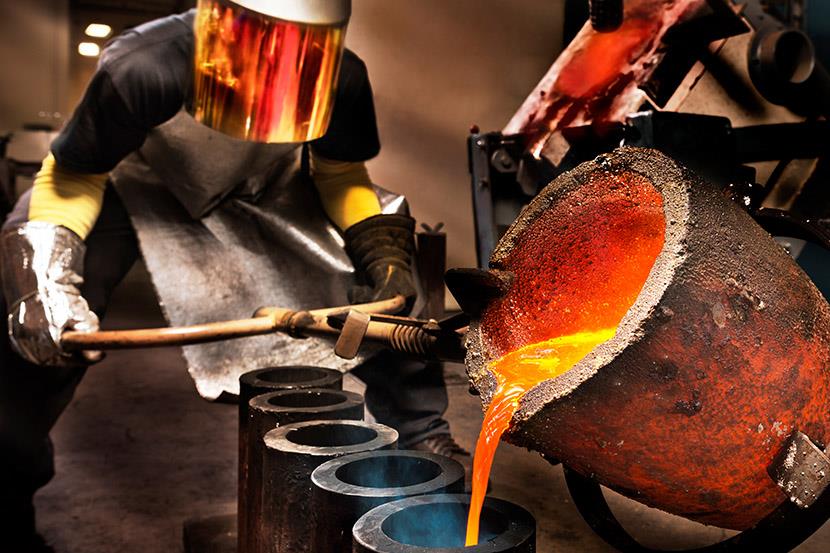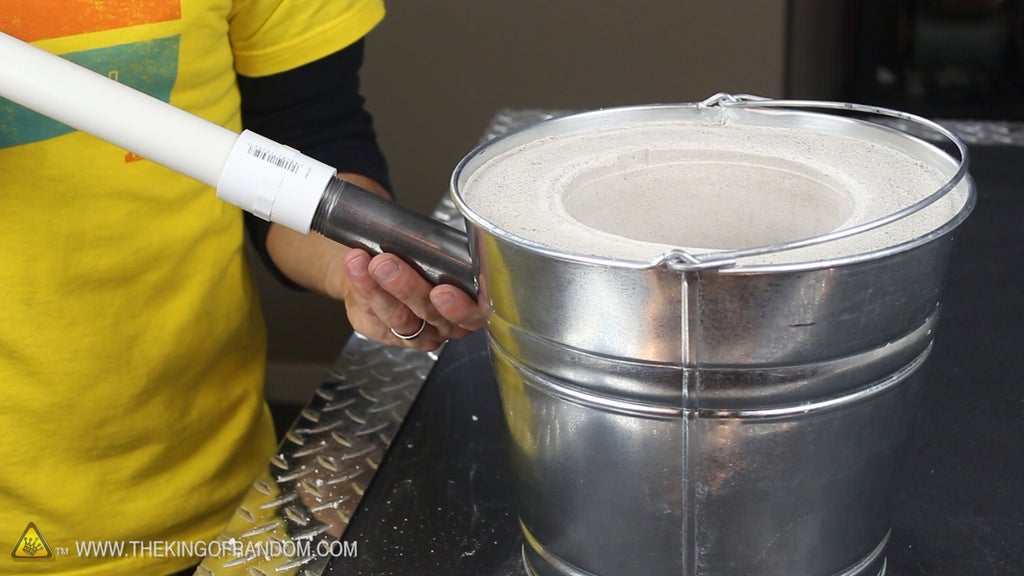Key differences between Metal Casting and other metal fabrication techniques
Discover the Cutting-edge Strategies Used in a Metal Foundry for Superior Casting Outcomes
In today's competitive production landscape, metal foundries are significantly taking on cutting-edge techniques to enhance casting results - Aluminum Foundry. Advanced computer simulations permit accurate modeling of liquified metal behavior, while 3D printing makes it possible for rapid production of complicated mold and mildews. Additionally, green materials and automation simplify operations. These developments promise considerable renovations in effectiveness and quality assurance. The influence of these innovations on sustainability and manufacturing methods continues to be to be completely checked out.
Advanced Computer Simulations in Metal Casting
Advanced computer system simulations have revolutionized the metal spreading process by enhancing accuracy and efficiency. These sophisticated tools allow engineers to produce virtual versions of cast parts, allowing them to analyze and anticipate the behavior of liquified metal throughout the casting stage. By mimicing various specifications such as temperature level, flow rate, and air conditioning prices, makers can determine potential problems before physical manufacturing begins.
This proactive technique decreases waste and decreases costly errors, eventually leading to boosted item top quality. In addition, simulations help with the optimization of mold layouts, making sure that they meet the specific needs of each task. The combination of computational liquid characteristics (CFD) and finite element analysis (FEA) more adds to the accuracy of these simulations, supplying understandings that were formerly unattainable. As an outcome, progressed computer simulations have actually become an important component of modern metal foundries, significantly advancing the sector's abilities.
3D Printing for Mold And Mildews and Patterns
3D printing has emerged as a groundbreaking technique for producing molds and patterns in the metal foundry market. This modern technology enables the rapid manufacturing of complicated geometries that traditional manufacturing techniques battle to attain. By using additive production, foundries can produce elaborate layouts with reduced lead times and product waste. The capacity to create mold and mildews as needed enables for higher flexibility in style models, facilitating faster prototyping and alterations.
3D printing can make use of a range of materials, consisting of plastics and steels, customized to particular casting requirements. This flexibility boosts the precision of mold and mildews, resulting in superior casting results with boosted surface area coatings. In addition, the decrease in the number of parts required streamlines setting up procedures, further optimizing manufacturing efficiency. As foundries proceed to embrace 3D printing, they are positioned to redefine market criteria, leading the way for development and enhanced productivity in metal casting operations.
Eco-Friendly Products and Processes
As the metal foundry market deals with enhancing pressure to decrease its environmental footprint, the adoption of environment-friendly products and procedures has ended up being essential. Shops are now checking out sustainable choices to conventional products, such as utilizing recycled metals and bio-based binders. These products not just minimize waste yet additionally reduced energy usage throughout production.
Furthermore, innovations in sand casting techniques have actually caused using artificial sands that are much less hazardous to the setting. Factories are likewise implementing cutting-edge processes like molten metal therapy that minimizes emissions and boosts the high quality of actors items.
Water-based coverings have replaced poisonous solvents, promoting a more secure job environment. By incorporating these environmentally friendly techniques, metal foundries can substantially lower their environmental influence while maintaining high-grade casting outcomes. This change not Home Page only benefits the setting but likewise straightens with the expanding consumer demand for sustainable production solutions
Automation and Robotics in Foundry Operations
While the metal foundry industry accepts development, the integration of automation and robotics is transforming procedures substantially. Automated systems simplify procedures such as mold and mildew production, metal pouring, and casting finishing, considerably boosting performance. Robotics promote the handling of heavy materials, decreasing the danger of work environment injuries and making certain more secure settings.

Further, the usage of automated directed cars (AGVs) optimizes product transportation within facilities, making sure timely distribution of components to proper workstations. By applying these modern technologies, foundries can adapt to fluctuating needs with higher agility, inevitably leading to improved profitability and competition out there. As automation and robotics continue to develop, they hold the potential to redefine standard foundry techniques and drive additional developments in casting strategies.
Real-Time Tracking and Quality Control Techniques
The innovations in automation and robotics have led the way for a lot more sophisticated strategies to high quality guarantee in metal foundries. Real-time monitoring systems use advanced sensors and information analytics to track vital parameters throughout the casting procedure. These systems continually evaluate variables such as material, pressure, and temperature level make-up, allowing prompt detection of discrepancies from established requirements.
Quality control strategies now integrate artificial intelligence formulas that examine historical information to predict prospective issues prior to they occur. This proactive technique decreases waste and boosts overall production performance. Furthermore, integrated responses loopholes permit quick changes, guaranteeing that each casting satisfies rigid quality requirements.
The application of electronic doubles-- virtual reproductions of physical assets-- has additionally transformed quality control, permitting engineers to imitate and maximize processes in real-time. With each other, these cutting-edge strategies greatly enhance the reliability and top quality of spreadings, establishing new market standards in metal foundry procedures.
Regularly Asked Questions
What Sorts of Metals Are Commonly Cast in Foundries?
Commonly cast steels in foundries consist of aluminum, bronze, iron, and brass. Each metal displays distinct residential or commercial properties, making them suitable for numerous applications, such as vehicle parts, machinery, and artistic sculptures, boosting their adaptability in manufacturing.

How much time Does the Casting Refine Generally Take?
The casting procedure commonly takes a number of hours to days, relying on elements such as the intricacy of the mold, kind of metal made use of, and cooling needs. Each phase affects the general period markedly.
What Safety Procedures Remain In Area for Foundry Workers?

Exactly how Are Problems in Castings Identified and Addressed?
Flaws in castings are identified through visual evaluations and non-destructive testing methods. Once spotted, foundry workers address them by refining procedures, readjusting material compositions, and implementing corrective actions to guarantee high quality and compliance with requirements.
What Is the Cost Range for Metal Casting Providers?
The expense variety for metal casting solutions commonly ranges $1 to $10 per extra pound, relying on elements such as material kind, complexity of the style, and manufacturing volume, influencing general rates significantly.
In today's affordable manufacturing landscape, metal foundries are significantly adopting cutting-edge strategies to improve casting results. As the metal foundry industry faces raising pressure to lower its ecological footprint, the adoption of eco-friendly products and processes has actually ended up being important. Shops are now checking out sustainable options to standard materials, such as making use of recycled metals and bio-based binders. By integrating these environmentally friendly methods, metal foundries can markedly reduce their ecological effect while preserving top notch casting More about the author outcomes. The improvements in automation and robotics have actually led the means for extra innovative approaches to high quality guarantee in metal foundries.